In the shadowy corners of our world lurk some of nature’s most fascinating yet seldom encountered predators: elusive venomous spiders. While common house spiders regularly cross our paths, certain venomous species remain hidden mysteries, rarely glimpsed by human eyes. These secretive arachnids have evolved to remain concealed, hunting from the depths of dense forests, remote caves, or isolated deserts. Their rarity stems not only from specialized habitats but often from nocturnal lifestyles, subterranean existences, or incredibly specific ecological niches. This exploration takes us into the hidden world of these seldom-seen venomous spiders—creatures that combine potent toxins with remarkable adaptations for concealment, making encounters with humans exceptionally rare but nonetheless significant when they occur.
The Sicarius Spider (Six-Eyed Sand Spider)
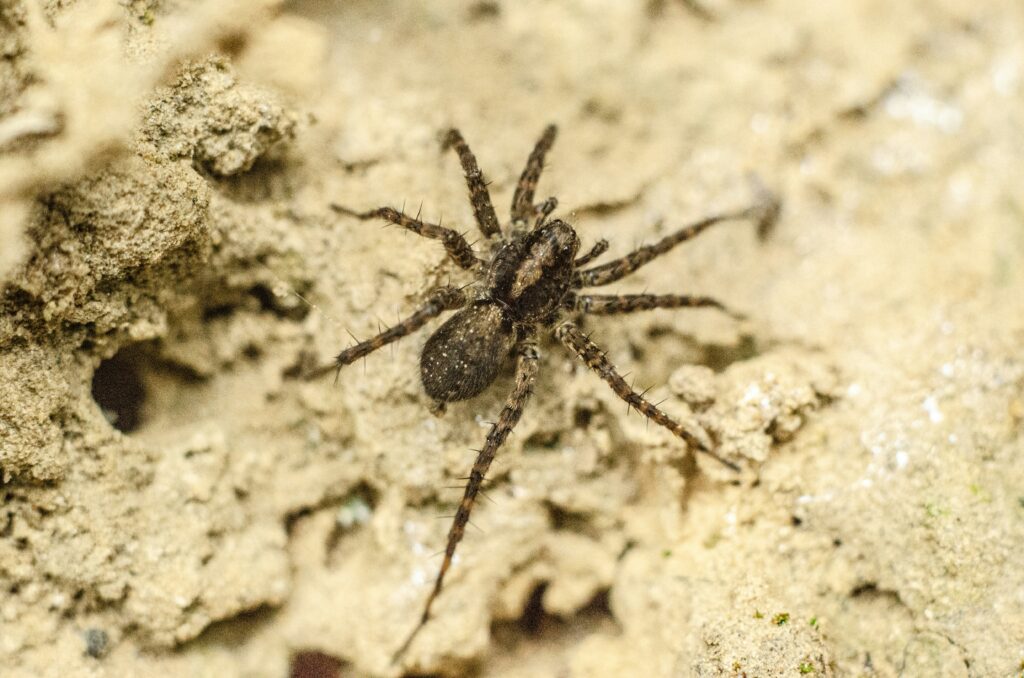
Lurking beneath the sands of southern Africa’s deserts, the Sicarius spider—also known as the Six-Eyed Sand Spider—represents one of arachnology’s most elusive venomous species. These remarkable hunters have perfected the art of camouflage, using their flattened bodies to bury themselves completely under a thin layer of sand, with only their eyes remaining exposed as they wait for prey. Their venom contains a potent cytotoxin that can cause tissue necrosis, though documented bites on humans are virtually non-existent due to their remote habitat and shy nature. Scientists have had such difficulty studying these spiders in their natural environment that much of what we know comes from the rare specimens occasionally found by specialized researchers during targeted expeditions.
Loxosceles Tenochtitlan (Mexico City Recluse)
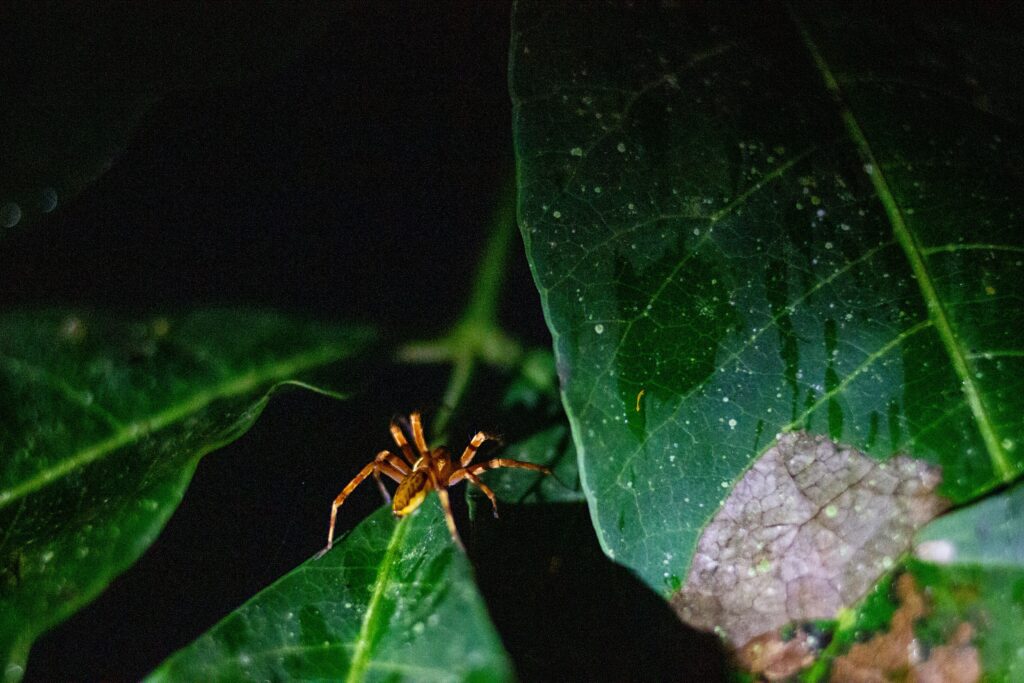
Discovered only in 2019, the Mexico City Recluse represents one of the most recent additions to the roster of elusive venomous spiders. Despite residing in one of the world’s largest urban areas, this species remained undetected for centuries, hiding in dark, undisturbed corners of homes and buildings throughout central Mexico. Like other recluse spiders, it carries hemotoxic venom that can cause severe necrotic lesions, yet its secretive nature means encounters are extraordinarily rare despite its urban habitat. Researchers believe this spider has likely been responsible for bites previously attributed to other recluse species, highlighting how even in densely populated areas, some venomous spiders can remain virtually invisible to science for generations.
Phoneutria Boliviensis (Bolivian Wandering Spider)

While its Brazilian cousin often makes headlines as the world’s most venomous spider, the Bolivian Wandering Spider maintains a much lower profile despite carrying similarly potent neurotoxic venom. These nocturnal hunters roam the forest floor of remote Amazonian regions, making them far less likely to encounter humans than their more notorious relatives. Their exceptional mobility and preference for undisturbed rainforest habitat means they retreat deeper into diminishing wilderness areas, becoming increasingly difficult to observe in their natural state. Unlike many venomous spiders that build webs, these active hunters’ wandering lifestyle means they leave few signs of their presence, making scientific study particularly challenging even for experienced field researchers.
Missulena (Australian Mouse Spiders)

Dwelling in the Australian outback, Mouse Spiders of the genus Missulena represent some of the continent’s most secretive venomous arachnids, often overshadowed by their relatives, the funnel-web spiders. These stocky, robust spiders construct deep, vertical burrows equipped with trapdoor-like entrances that they rarely venture far from, making sightings exceedingly uncommon even in their native range. Their venom contains powerful neurotoxins comparable to those of funnel-web spiders, yet bites remain exceedingly rare due to their reclusive nature and remote habitat preferences. Female Mouse Spiders are particularly elusive, sometimes spending their entire adult lives within their burrows, emerging only briefly during the mating season or after heavy rains have flooded their underground domains.
Macrothele Calpeiana (European Funnel-Web Spider)
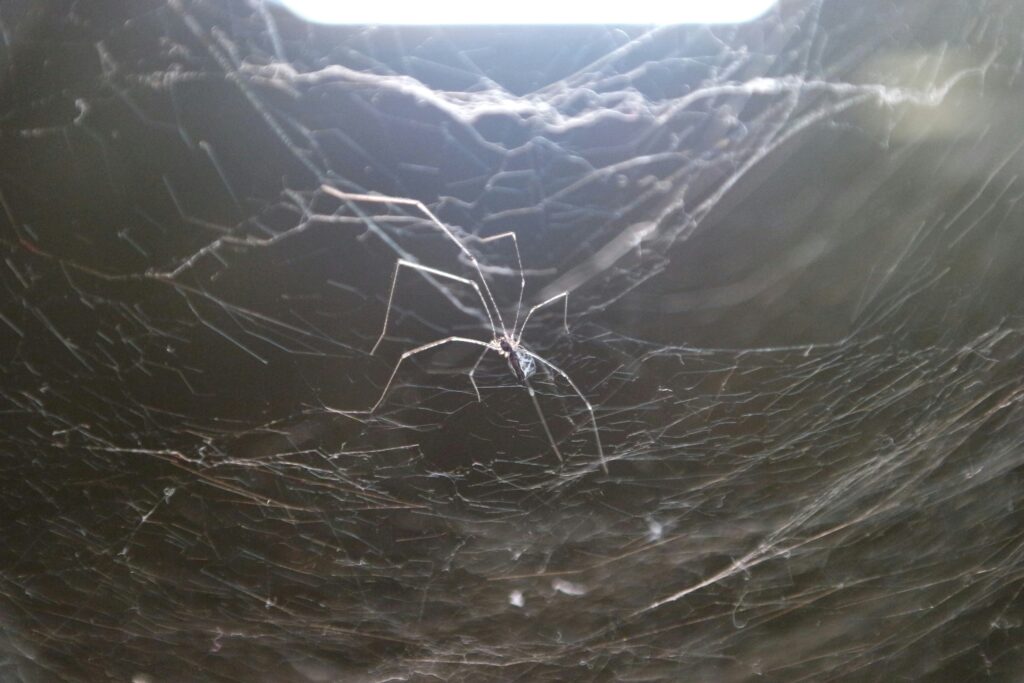
As Europe’s largest spider and one of its few potentially dangerous species, the European Funnel-Web Spider remains remarkably obscure even within its limited range in southern Spain and northern Africa. These nocturnal predators construct elaborate tunnel systems beneath rocks and logs in cork oak forests, venturing out only under the cover of darkness to ambush passing prey. Despite measuring up to 3.5 inches in leg span, their secretive habits and preference for undisturbed woodland means that even local residents in their native range may live their entire lives without encountering one. Though their venom is not considered life-threatening to humans, confirmed bites are so rare that medical literature contains almost no documented cases, making this spider something of a phantom in European arachnology.
Heteropoda Maxima (Giant Huntsman Spider)
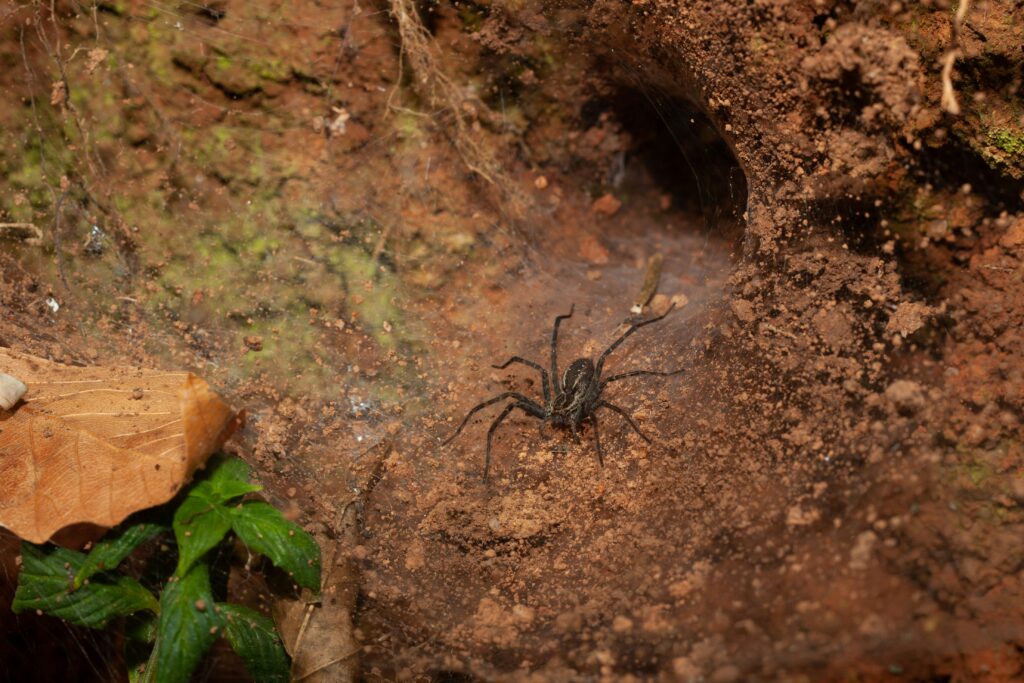
Hidden within the remote cave systems of Laos, the Giant Huntsman holds the distinction of being the world’s largest spider by leg span, yet remains one of the least frequently observed. These impressive arachnids, with legs spanning up to 12 inches, live exclusively in the darkness of limestone caves, making them virtually impossible to encounter without specialized caving equipment and expertise. Their venom, while not medically significant to humans, aids in subduing the cave-dwelling insects and small vertebrates that constitute their diet in these isolated ecosystems. First discovered scientifically only in 2001, these giants evaded detection for so long that researchers believe many related species likely remain undiscovered in the vast, unexplored cave systems throughout Southeast Asia.
Hexophthalma (Six-Eyed Crab Spider)
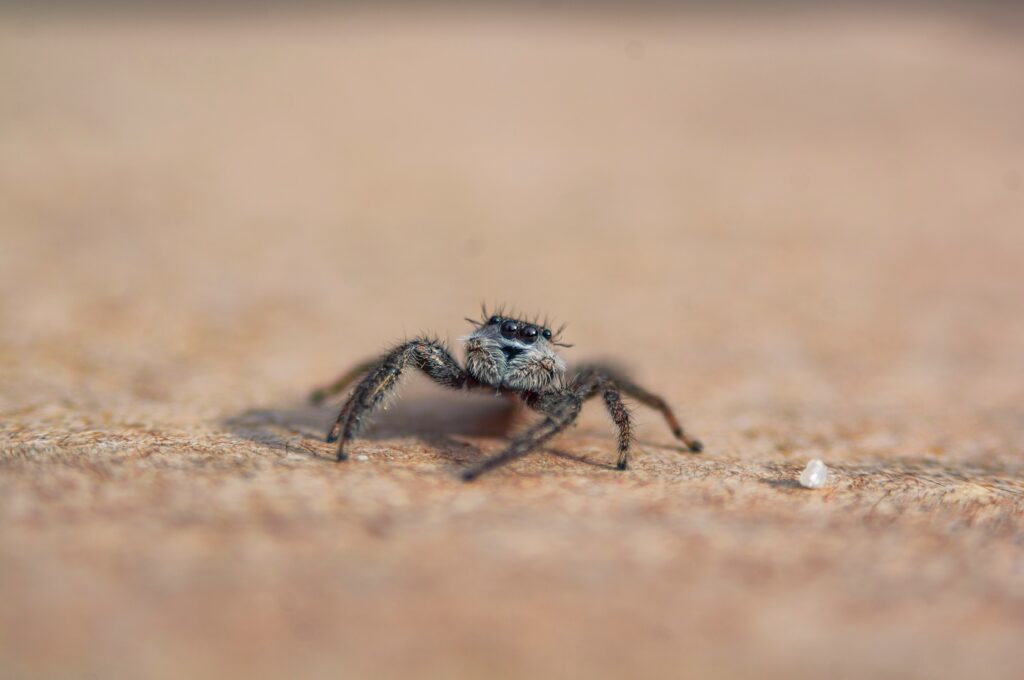
The remote deserts of southern Africa harbor the rarely seen Six-Eyed Crab Spiders, whose potent cytotoxic venom rivals that of the more notorious brown recluse. These spiders have evolved specialized behaviors to avoid the desert heat, remaining buried in sand or hidden under rocks during daylight hours and emerging only briefly at night to hunt. Their exceptional camouflage—with body colorations perfectly matching the sand and stones of their habitat—makes them nearly impossible to spot even when they are active on the surface. Researchers studying these elusive hunters must often employ ultraviolet light detection methods at night, as the spiders’ cuticles fluoresce under this light, briefly revealing their presence in an otherwise pitch-black landscape.
Loxosceles Rufescens (Mediterranean Recluse)

Despite having expanded its range globally through human shipping activities, the Mediterranean Recluse remains one of the world’s most rarely encountered venomous spiders due to its exceptionally secretive nature. These small, unremarkable-looking brown spiders hide in the darkest, least-disturbed corners of buildings, storage areas, and caves, emerging only at night when human activity has ceased. Their exceptional ability to survive in dry conditions allows them to persist in abandoned structures or rarely accessed spaces for years without detection. While capable of delivering medically significant bites with tissue-destroying venom, encounters are so infrequent that most residents in areas where the spider has established remain completely unaware of its presence, even when sharing living spaces with these hidden arachnids.
Atrax Robustus (Sydney Funnel-Web Spider)
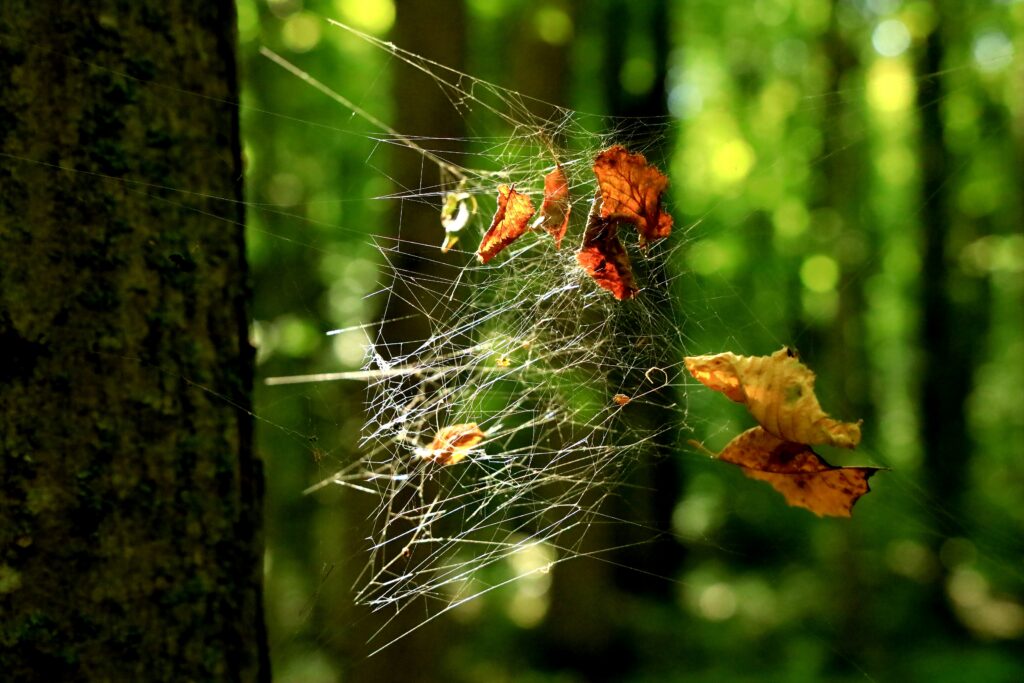
Though infamous in Australia, the Sydney Funnel-Web Spider is paradoxically one of the continent’s most difficult venomous spiders to observe in its natural habitat. These glossy, dark arachnids construct deep burrows in moist forest environments, lining them with characteristic silk “trip lines” that alert them to passing prey. Males become temporarily visible only during brief mating seasons when they wander in search of females, otherwise remaining hidden in their sealed burrows that blend perfectly with the surrounding leaf litter and soil. The spider’s preference for undisturbed woodland habitat means that despite their fearsome reputation and proximity to Australia’s largest city, professional arachnologists sometimes conduct multiple field expeditions before successfully locating specimens in the wild.
Hexathelidae (Primitive Funnel-Web Spiders)

The ancient rainforests of New Zealand harbor some of the world’s most primitive and elusive venomous spiders belonging to the family Hexathelidae, whose lineage dates back over 150 million years. These living fossils maintain highly specialized ecological niches, constructing silken tubes within rotting logs or under dense moss carpets in areas so remote that some species remain known from fewer than five specimens ever collected. Their venom contains unique compounds that have evolved in isolation for millions of years, presenting potential pharmaceutical interest that has driven recent research expeditions. The spiders’ extreme sensitivity to habitat disturbance means that as primitive forests have disappeared, these already rare arachnids have become increasingly difficult to locate even for scientific study, with some species potentially becoming extinct before being properly documented.
Actinopus (South American Trap-Door Spiders)

Throughout the remote regions of South America, particularly in the less explored areas of the Amazon Basin and Andean foothills, various species of Actinopus trap-door spiders maintain their secret existence. These engineering marvels construct perfect vertical burrows capped with camouflaged doors made from soil, vegetation, and silk that are nearly impossible to detect in the forest floor. So perfect is their concealment that researchers often locate their burrows only by tracking the spiders during their brief mating seasons using specialized night vision equipment. Though armed with potent venom used to quickly immobilize prey that triggers their burrow’s trip lines, human encounters with these spiders are virtually non-existent, as they rarely emerge from their underground sanctuaries except under specific environmental conditions that occur only a few nights each year.
Selenocosmia Crassipes (Australian Whistling Spider)

Hidden in the remote rainforests of Queensland, Australia, the Whistling Spider earns its name from the remarkable hissing sound it produces when threatened—a warning rarely heard by human ears due to the spider’s extreme seclusion. These large tarantula relatives construct elaborate burrow systems that can extend several feet underground, complete with multiple chambers and emergency exits that they seldom need to leave. Their venom contains unique compounds capable of causing severe pain, vomiting and cardiac symptoms, yet confirmed bites are almost non-existent in medical literature due to the spider’s preference for undisturbed habitat far from human settlement. The most fascinating aspect of these spiders’ elusiveness is that despite their large size—with leg spans exceeding 6 inches—researchers conducting nighttime surveys in known Whistling Spider territory are frequently unable to locate even a single specimen during multiple consecutive expeditions.
The world of elusive venomous spiders represents one of arachnology’s final frontiers, where discovery remains as challenging as it is rewarding. These secretive hunters have mastered the art of remaining unseen, whether through specialized camouflage, remote habitats, or behaviors that minimize their exposure. Their rarity offers them a measure of protection from human disturbance, but also creates significant challenges for conservation efforts and medical research into their unique venoms. As technology advances and remote habitats become more accessible to researchers, we may gradually unveil more secrets of these phantom arachnids. Until then, they continue their hidden existence—a reminder that even in our thoroughly explored world, nature still harbors mysteries that remain largely unseen by human eyes, waiting in the shadows for those patient and dedicated enough to discover them.

